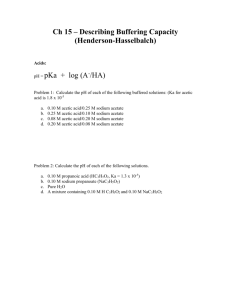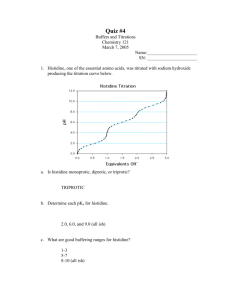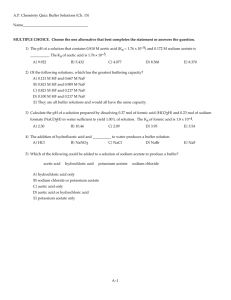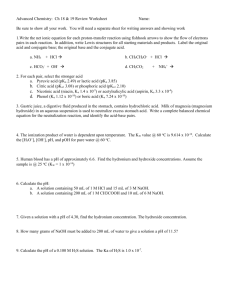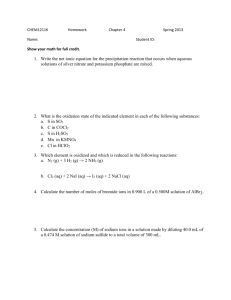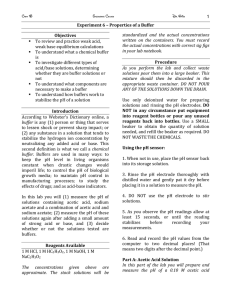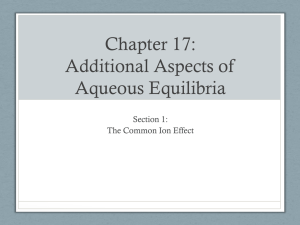water - UniMAP Portal
advertisement
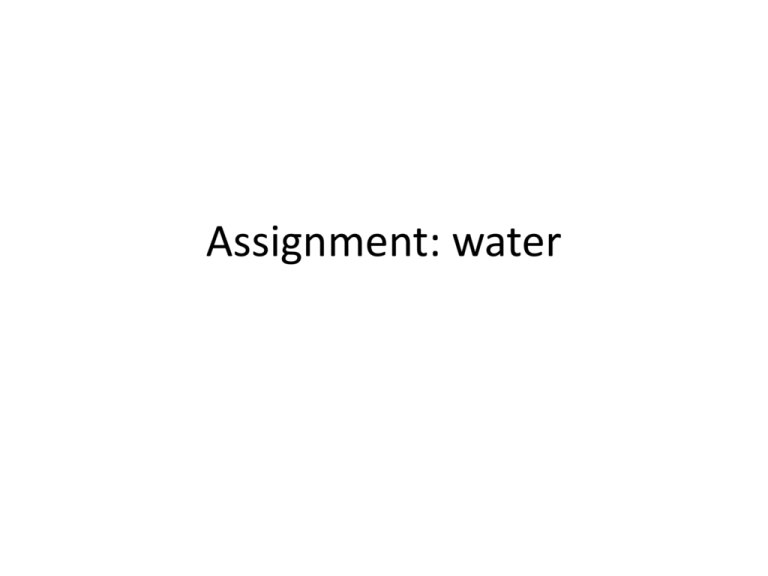
Assignment: water Problem 1 When 0.1 g of urea (MW = 60) is diluted to 100 mL with water, what is the osmotic pressure of the solution? (Assume that the temperature is 25 °C) Calculate the osmolarity of the urea solution The number of particles produced per mole of solute is 1. The osmotic pressure at 25 °C (298 K) is given by the equation Urea is a nonelectrolyte, so i=1 Problem 2 Estimate the osmotic pressure of a solution of 0.1 M NaCl at 25 °C. Assume 100% ionization of solute? A solution of 0.1 M NaCl produces 0.2 mol of particles per liter (0.1 mol of Na+ = and 0.1 mol of Cl-). The osmotic pressure at 25 °C (298 K) is Problem 3 Calculate the pH of a mixture of 0.25 M acetic acid and 0.1 M sodium acetate. pKa of acetic acid is 4.76. Problem 4 What is the pH in the preceding problem if the mixture consists of 0.1 M acetic acid and 0.25 M sodium acetate = 4.76 + 0.398 = 5.16 Problem 5 Calculate the ratio of lactic acid and lactate required in a buffer system of pH 5.00. The pKa of lactic acid is 3.86 Can be rearrange to = 5.00 – 3.86 = 1.14 Therefore the required ratio is Problem 6 During fermentation of wine, a buffer system consisting of tartaric acid and potassium hydrogen tartrate is produced by biochemical reaction. Assuming that at some time the concentration of potassium hydrogen tartrate is twice that of tartaric acid, calculate the pH of the wine. pKa of tartaric acid is 2.96. Problem 7 What is the pH of a solution prepared by mixing 150 ml of 0.1 M HCl with 300 ml of 0.1 M sodium acetate (NaOAc) and diluting the mixture of 1 L? The pKa of acetic acid is 4.76. Problem 7 What is the pH of a solution prepared by mixing 150 ml of 0.1 M HCl with 300 ml of 0.1 M sodium acetate (NaOAc) and diluting the mixture of 1 L? The pKa of acetic acid is 4.76 The amount of acid present in the solution is given by the equation: The amount of sodium acetate is found using the same equation: Each mole of HCl will consume 1 mol of sodium acetate and produce 1 mol of acetic acid. This will give 15 mM of acetic acid with 15 mM remaining of sodium acetate (i.e., 30 mM – 15 mM). substituiting these values into the Henderson-Hasselbalch equation gives Because the log term ratio of two concentrations, the volume factor can be eliminated and the molar amounts can be used directly Problem 8 What would be the effect of adding an additional 50 ml of 0.1 M HCl to the solution in problem 7 before diluting to 1 L? Problem 8 What would be the effect of adding an additional 50 ml of 0.1 M HCl to the solution in problem 7 before diluting to 1 L? Using the same equation as in problem 7, the amount of HCl would be Which is also equal to the concentration of acetic. The amount of sodium acetate would be Substituting into the Henderson-Hasselbalch equation gives

